What is the Trusted Shops Community of Trust?
What is the Community of Trust? How do you gain access to the 45 million shoppers in it? And how do you improve your conversions, AOV, and more?
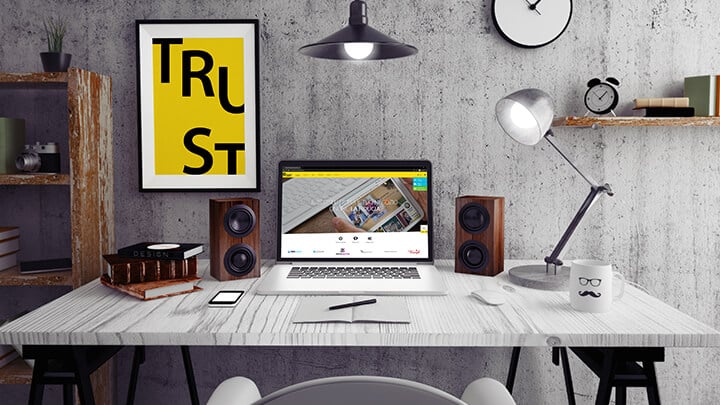
Working from home can help many people improve concentration and productivity. Especially during the precautionary measures due to COVID-19 forcing us to stay at home, smart-working is essential if you want to keep your e-commerce business running. Keep reading to find out everything there is to know about “smart-working”.
Our modern business world is becoming increasingly flexible and digital. Therefore, smart-working plays an important role in the lives of many of us.
For some, working remotely is already part of their work life. For others, it’s an inevitable and sudden solution resulting from the coronavirus epidemic that forces us to stay at home.
In one way or another, working from home can reveal some great possibilities for your personal working style: a totally customisable work space made according to your personal needs and ideas. Many believe that you could even make more money per day working from home than at the office.
To achieve this level of productivity, however, a certain level of self-discipline, organisation, and transparency is required.
In this article, you’ll learn about:
Part One: Layout and equipment
Part Two: Task organisation and communicating with your team
Part Three: Achieving goals and working without distractions
Part Four: Mental and physical well-being
Part Five: 3 useful tools for smart-working
Before we start, let's briefly clarify the difference between home-office and smart-working. In both cases, the intention is to work outside the office, but
Home-office means a "classic" working day with a place (employee's home) and set hours.
Smart-working, on the other hand, is a way of working that is adjusted to the needs of the worker. Smart-working has no place or time constraints, the performance measurement criterion is based on the objectives achieved by the employee.
Currently, smart-working is an expression that is often heard in the news about how to work effectively despite the restrictions due to COVID-19. In this article, we’ll give you advice that applies to both smart-working and home-office.
Let's get started!
For your smart-working to be most efficient, it is essential to think about where and how to do it before you start.
The first important task you’ll have to do when working from home is to find the right place in your home. The environment in which you choose to work in is the key aspect to your productivity. This is why you should choose it carefully.

Shutterstock/Andrey_Popov
The best option obviously is to have a dedicated room, where you can retreat easily by shutting the door behind you. However, not everyone has a separate room to use as a study. If that's the case, pick a spot in your house that is:
quiet and where you can only hear little traffic during the day
close to the internet router, ensuring a fast connection
near a natural light source
If possible, choose a place near a window. Natural light is essential for productivity and motivation. It also helps create positivity and reduces stress. Natural light also makes us feel more awake.
Avoid having the window to your backside because of the annoying reflections that will then probably appear on the screen. But you should also avoid having it in front of you: The contrast of brightness between the external environment and the monitor can cause headaches.
Ideally, your workplace should be right next to the window. Choose a room overlooking the garden or a quiet street rather than one near a busy street to avoid distractions and traffic noise.
Finally, it doesn't matter how big the space you choose to work from is. If it’s limited, you can try to relocate it and also include shelves to have a bigger surface to work on.
A simple kitchen table and chair don’t make a suitable work space. Correct posture when working is important to avoid back problems and headaches, pains that can slow us down at work.
Don't pick furniture because of it’s cheap price for your smart-working workstation. Before making a purchase, read customer reviews (as these aren’t cheap purchases).
Ideally, your chair should have armrests. The height and rigidity of the backrest should be customisable to perfectly support your spine.
Likewise, the desk should allow you to adjust the height to work while standing (alternatively you could use a stand-up desk).
In addition, a footrest and a wrist rest can help relieve tension in hips and shoulders.

Shutterstock/Just Stock
Ideally, the company you work for should provide you with whatever tools and equipment you need to do your job (laptop, phone, headset, etc.). This way, you’ll have convenient access to the company’s server where all your files, contacts, and relevant information are stored.
A laptop has the advantage of being portable, which allows you to change your position often (we’ll talk about correct posture later on): you could then sit on the couch for a while, enjoy the sun on the balcony or in the garden.
Consider using a wireless mouse and keyboard. If your surroundings are noisy, headphones or a headset are a must-have.
Depending on your job, you may also need a printer and scanner, for example to upload documents to the cloud and share them with your team.
Finally, a natural light source is the ideal solution, though a lamp shouldn’t be missing from your setup either. Experts recommend a lamp between 400 and 600 lux. Some lamps adjust light according to your activity (concentration, study, relaxation, etc.).
Recommended reading:
How to Start an Online Shop: A Beginner's Guide
Now that you've found the right place and have all the material you need, it's time to talk about the day-to-day organisation of your tasks and how you can communicate with your team.

Shutterstock/Aree_S
The first step is to create a weekly work plan: what goals do you want to achieve by the weekend? Writing them down will make it easier for you to set your priorities, in order to meet deadlines.
The second step is to split the work day by day. It’s even better to establish in advance how much time you want to devote to each individual task.
One of the greatest advantages of smart-working is that you’ll be able to establish your working hours (more or less) with total autonomy. Nevertheless, it is important to ensure good communication with your team. In many companies, communication within the teams is a fundamental and necessary part of the workflow.
Working from home, the communication situation is totally different from a normal day at the office. If you have a question or an announcement to make, you can't just go to your colleague nor do you have an opportunity to hang out by the water cooler with your colleagues.
In part five, you can find some tools for making this much easier.
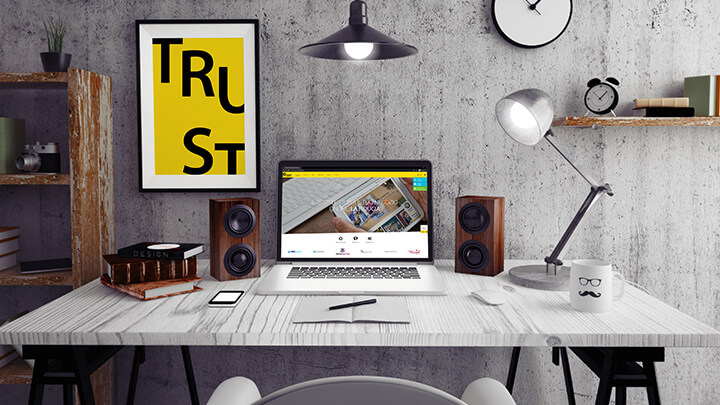
Shutterstock/pikcha
Working from home is a great opportunity in terms of your concentration: There are no meetings, no colleagues asking you questions - you can simply close your email program and devote yourself completely to your task.
However, even your home isn’t free from distractions. To resist the urge to lie in bed (or turn on the washing machine, etc.), you should pay attention to the next few points:
First, you should make sure you have everything you need for your work at hand. Getting up every 5 minutes is counterproductive and will disturb your concentration.
At the beginning of the day, you should determine what tasks and goals you want to achieve by the end of that same day. Obviously, complications can arise that lead to justified job delays, but having a to-do list will generally allow you to work more effectively.
With this in mind, setting an alarm or a stopwatch could turn out to be a useful tool for adhering to your plan of the day's tasks. Also, you could set time slots to work for a specific amount of time for a specific task.

Shutterstock/VictorH11
While the time is running out of your stopwatch, you won’t check your mobile phone, your emails, etc. and instead focus on your task.
Finally, you should behave exactly as if you were at the actual office. Don't stay in your pyjamas, start and finish work at the same time and take a break at a set time. This will not only help you focus on your task, it will also make it easier for your colleagues to know if and when they can contact you.
Smartphones are probably the biggest source of distractions, especially when the boss' wary eye isn’t watching us. Try to reduce the urge to check social media notifications, messages, etc. by silencing your phone, or even better, by leaving your phone in another room.
Unless you live alone, the second biggest distraction comes from your partner, kids, roommates, etc. It’s essential to communicate to the people you live with that although you’re physically at home, you're working and that they’ll have to respect your working hours.
Last, keep working in your work space. Working while lying on the couch isn’t only inadvisable because it’ll lead to back problems, you should also try to make the "desk-work" association as strong as possible.
The sedentariness, the impossibility of leaving one's home, the need to stay in a place that unites your private life with your work life: all these factors affect your mental and physical state.
Especially at times like this, when the Coronavirus forces us to work from home, it’s important to take precautions to safeguard your health.
Working several hours a day sitting can cause serious back pain. That is why the first thing to pay attention to when working from home is the correct posture:
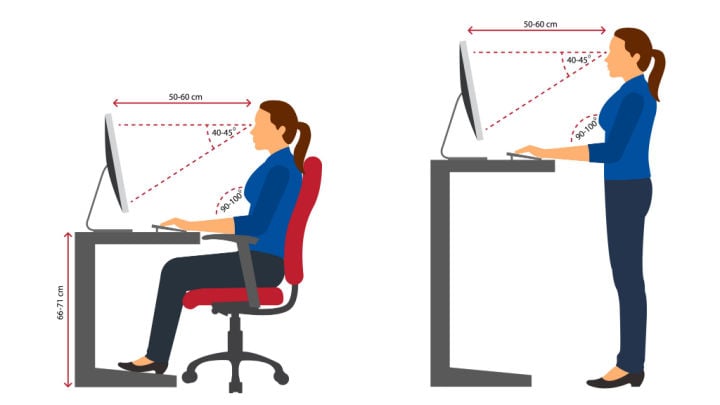
Shutterstock/Maanas
Switch between sitting and standing. Make sure the top of the screen is at eye level and the monitor is tilted to 35°. To keep yourself moving even while sitting down, you can use a gym ball and/or a mini exercise bike (pedal board).
Don't forget to listen to your body. Our inner clock can tell us when it's time to stop and take a break to refresh our body and mind.
Eat a healthy snack, go out on the balcony or in the garden to enjoy the first rays of warm sunshine, do a 20-minute power-nap, yoga, sports, etc. Physical well-being is indispensable to your mental well-being.
Air your work space regularly to let in a good dose of oxygen and pay attention to the humidity, which should be between 40 and 60%. Finally, disinfect your keyboard and mouse regularly.
Often, when working from home, you’re more likely to work more because you tend to operate according to your energy resources rather than sticking to a schedule.
At home-office, the workday doesn't end when you leave the office. To avoid over-straining yourself with tasks and for your own mental well-being, it is necessary to find another type of signal that definitely marks the end of the working day. This ritual will then mark the boundary between work and private life.
Recommended reading:
How to Boost Your Sales Team's Efficiency and Avoid Burnout
Turn off your laptop, make yourself some tea, do some housework, relax on the couch: do something that brings your mental state to "off-mode".

Shutterstock/AnnaStills
To make smart-working both pleasant and efficient, here are some useful tools you’ll need.
The tools listed in the following are all free, you can easily access them with your Google account.
Trello is a task management app for private or business use. This tool is like a digital blackboard with post-its that can be moved into the columns "to-do", "doing", "done", etc.
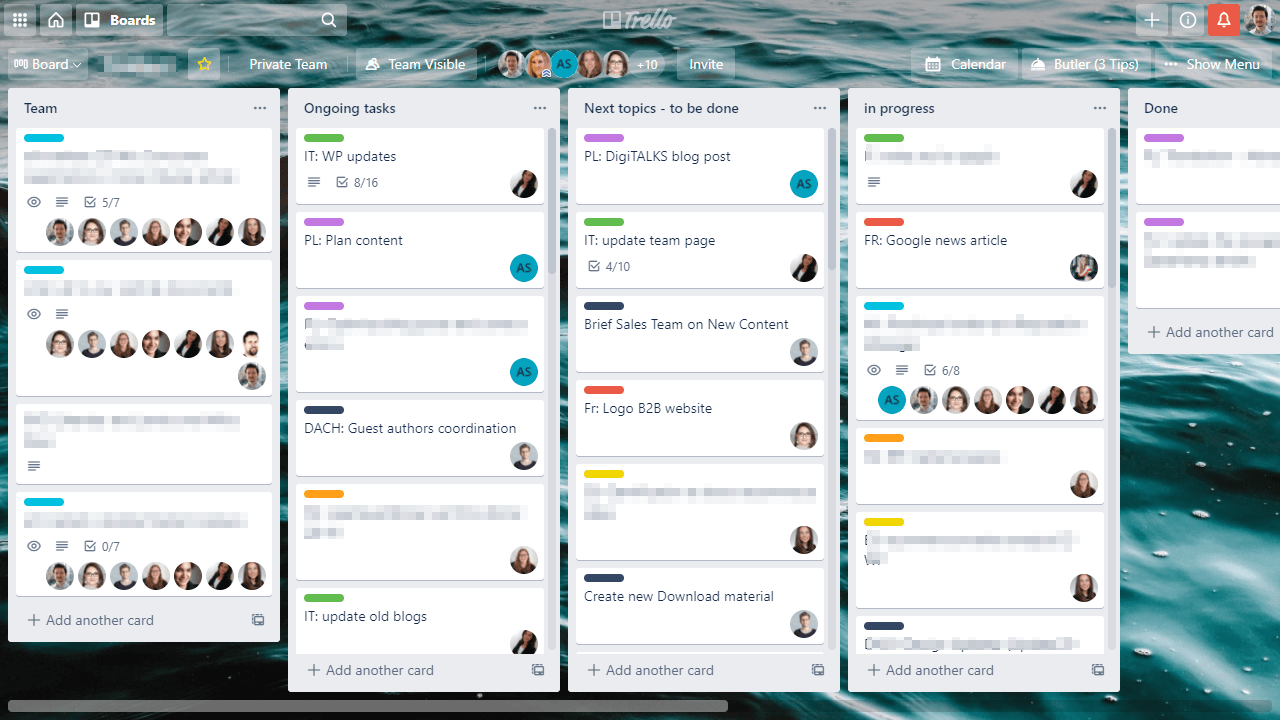
Each post-it shows who the person in charge for a certain task is. You also have the possibility to insert comments, custom labels, attachments and deadlines to your post-it.
Trello is an excellent tool to keep an eye on the progress of activity (personal or team), which serves well for working from home.
Slack is the messaging app that is most used by companies. There are public channels (e.g. for the whole company or for a team) and 1:1 conversation channels you can use to get in touch with colleagues.
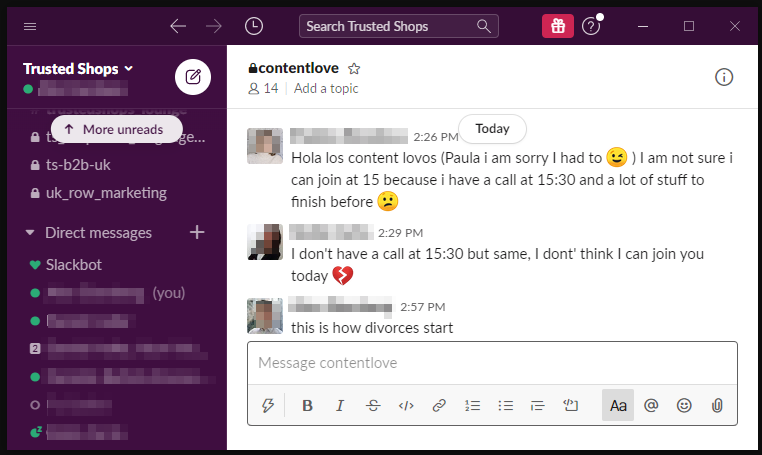
It can also be used for phone and video calls for 2 to 15 people. Besides all this, there is also the possibility to install the app on your mobile device.
Google Drive is a cloud storage service that offers 15GB free storage for each user. You can use it to create private documents and share them with your team.
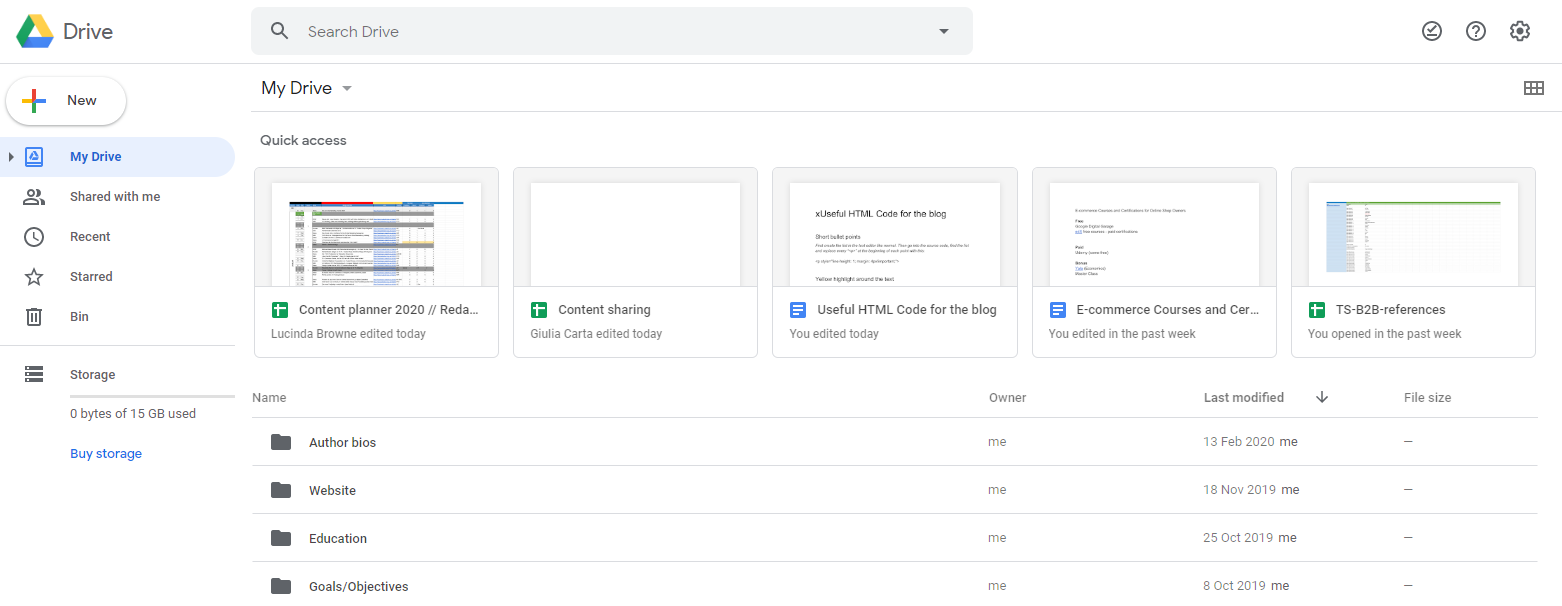
With Google Drive, you can create text documents, presentations and charts that will then be stored in a cloud accessible from any device (just log into your Google account).
Google Drive shows the changes made in real-time, making it a useful tool for doing team projects, for example, even when working from your home office.
Working from home requires self-discipline and motivation. Then again, an ergonomically designed working environment with a planned structure offers the possibility of efficient work.
Let us know in the comments below how you work from home!
This article was translated and adapted from our Italian blog: La guida allo smart working: come lavorare efficacemente da casa
14/04/20What is the Community of Trust? How do you gain access to the 45 million shoppers in it? And how do you improve your conversions, AOV, and more?
Your homepage has a few seconds to make or break a sale. Learn the essential homepage best practices that build trust and turn visitors into customers.